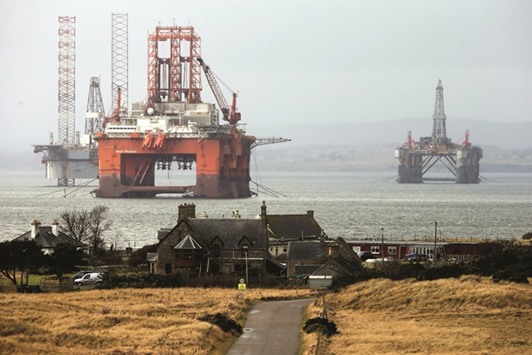Seadrill’s billionaire chairman and largest shareholder, John Fredriksen, is willing to lend the rig company as much as $1.2bn as part of a potential deal with banks and bondholders to restructure the biggest debt load in the offshore-drilling industry, two people familiar with the matter said. The company’s shares surged.
The loan of $800mn to $1.2bn features in a proposal by a working group of fewer than 10 banks, said the people, who asked not to be identified because the talks were private. The plan would imply a postponement of all bank maturities to at least 2020, helping the lenders avoid outright losses, the people said.
Seadrill rose as much as 46%, the most in seven months, erasing earlier losses. The stock traded 22% higher at 21.8 kroner as of 1:50pm in Oslo.
The proposal will be assessed by the wider group of 42 Seadrill lenders and the company’s bondholders, the people said. Seadrill chief executive officer Per Wullf said on September 14 that he aims to have a solution for restructuring the company’s net debt of more than $9bn by the beginning of December.
Seadrill’s refinancing plans remain on track, while the company declines to comment on the details of the proposal, according to a spokesman who asked not to be named in line with company policy. A senior adviser to Fredriksen didn’t immediately reply to an e-mail and a phone call seeking comment.
Seadrill and other offshore-rig operators have been hit hard by the collapse in crude prices over the past two years as oil companies slashed spending on services such as drilling. The pain has been compounded by a wave of new rigs, creating massive oversupply in the industry and decimating rental rates. Drillers have cut costs, suspended dividends, renegotiated contracts and idled or scrapped rigs to weather the market rout.
The pressure is particularly high on Seadrill, whose net interest-bearing debt of $9.1bn at the end of the second quarter is the highest among its peers. The company will need at least $1bn in new capital, analysts from banks including Nordea and DNB have said.
All eyes have been on Fredriksen, who founded Seadrill in 2005 and built it up to become at one point the biggest offshore driller by market value. The company was the crown jewel of his shipping and oil empire until the market collapsed at the end of 2014. The stock has dropped more than 90% since July 2014. Fredriksen’s net worth is currently estimated at about $10.2bn, with more than half in cash and other assets, according to the Bloomberg billionaire’s Index.
Under the proposal being discussed for Seadrill’s restructuring, Fredriksen’s contribution would come as a loan and not new equity because he views debt as a less risky investment than stock given the industry’s outlook, the people said.
While rental rates for floating rigs may have bottomed out, it’s impossible to say when they will finally recover, Wullf said on September 14. The CEO said at the time that he was “carefully optimistic” about Seadrill’s restructuring process. “It’s a big puzzle,” he said.

The West Phoenix oil platform, operated by Seadrill Norge stands in the Port of Cromarty Firth in Cromarty, UK. Chairman Fredriksen’s proposal will be assessed by the wider group of 42 Seadrill lenders and the company’s bondholders, sources said.
